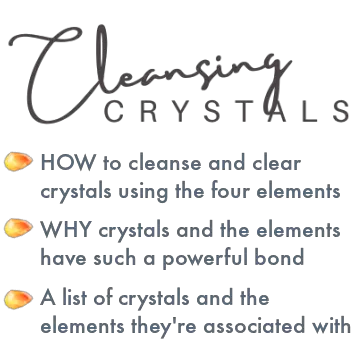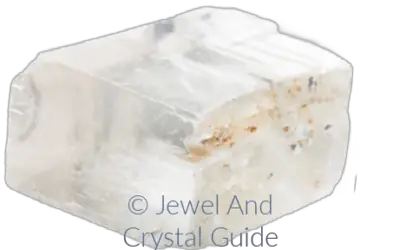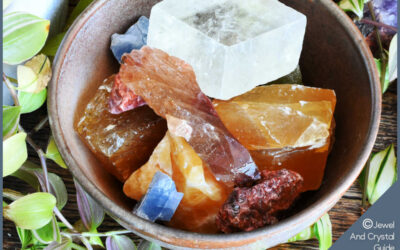Many people ask me how to tell if their citrine is real or fake, and what’s the difference really. So today I thought I’d write a bit about the three kinds of citrine you might find on the market, and how these varieties affect your work with crystals.
Natural citrine forms in the Earth when amethyst or smoky quartz is heated to over 900°F (482°C). Most citrine on the market is synthetic or man-made by heating amethyst in a kiln at the same temperature. Some citrine is glass – these imitations aren’t real and have no crystal properties.
Let’s explore how each type of citrine is made, and whether or not heat-treated amethyst is really “fake citrine” as many people believe.
In this blog post, we’ll discuss the differences between natural, heat-treated, fake, and imitation citrine, and how these might affect crystal work.
Natural vs heat-treated vs fake citrine
Before we can talk about which versions of citrine are fake or real, it’s good to understand where each type of citrine comes from…
Natural citrine
The Earth is very, very hot deep inside its mantle, and crystals are often exposed to some of this heat when they form or spend time below ground.
Citrine comes from purple amethyst and sometimes black or brown smoky quartz that got hot underground.

Quartz crystal is usually named after its color, even though it’s all quartz crystal. For example, rose quartz is pink, amethyst is purple quartz, smoky quartz is brown or black, and citrine is yellow quartz.
When amethyst or smoky quartz is heated in the Earth, they change color to yellow and become citrine. This is called natural citrine, real citrine, or simply citrine, and it’s the real citrine made by Mother Nature (albeit the most expensive kind).
Different temperatures have different effects on citrine-forming crystals:
- Purple amethyst becomes pale yellow citrine at temperatures above 900 °F (482 °C).
- Some smoky quartz only needs to reach 390 °F (199°C) to become pale yellow citrine.
- Purple amethyst turns into Madeira citrine, a dark yellow or even reddish-brown citrine, at temperatures over 1022 °F (550 °C).
You can often identify natural citrine by looking at it when you know what to look for…
Natural citrine is translucent or see-through in places, with a consistent yellow color throughout. Most natural citrine is pale yellow, much like the color of a weak cup of tea.
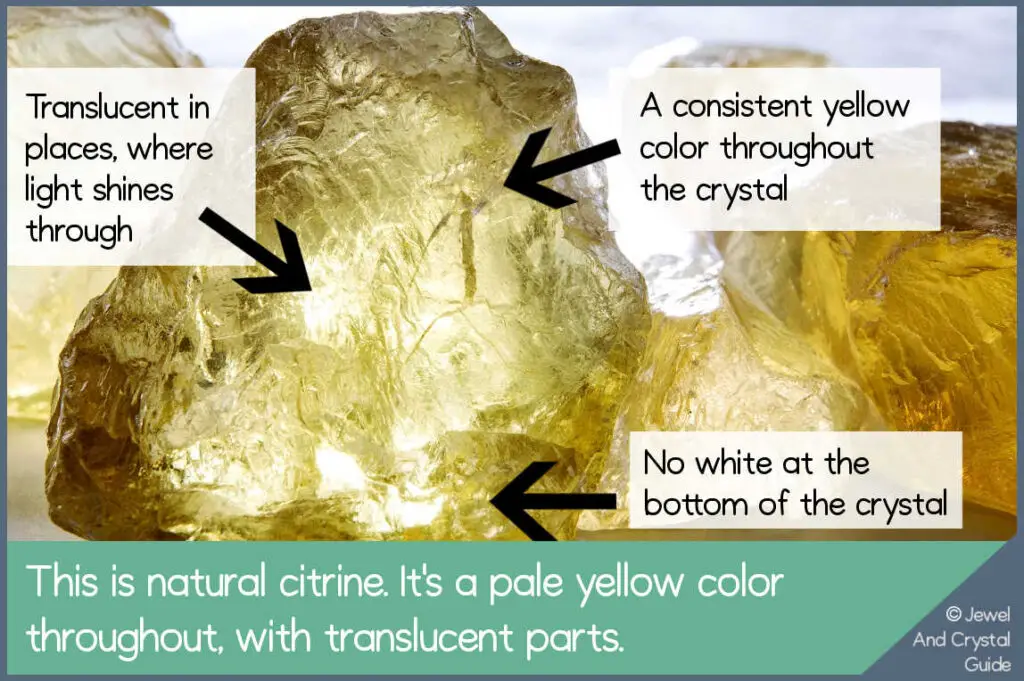
When buying natural citrine, look for the words natural, authentic, or certified. Ask the seller about the source of the crystal and make your own observation to see if it’s natural citrine or not.
If you want to know how crystals get their colors, read this article next.
Heat-treated citrine
Next up we have heat-treated citrine, which is what most citrine on the market is. Did you know that?
Heat-treated citrine is man-made by heating pale purple amethyst to over 900 °F (482 °C) to turn it into citrine. This is usually done at the mines and is most often amethyst, though sometimes smoky quartz is used, and it’s called citrine, synthetic citrine, or burnt amethyst.
Some people call heat-treated amethyst fake citrine, but we’ll get into that discussion in a little bit.
There’s a lot more amethyst available than natural citrine, so heat-treated citrine is cheaper than natural citrine and much easier to find on the market – You really have to be willing to invest quite a bit for natural citrine, if that’s what’s important to you.
Some sellers might say they’re selling natural citrine when it’s heat-treated citrine, so be sure to ask and know how to tell the difference between the two (here are all the methods I know of to tell the difference between natural, real, and fake citrine).
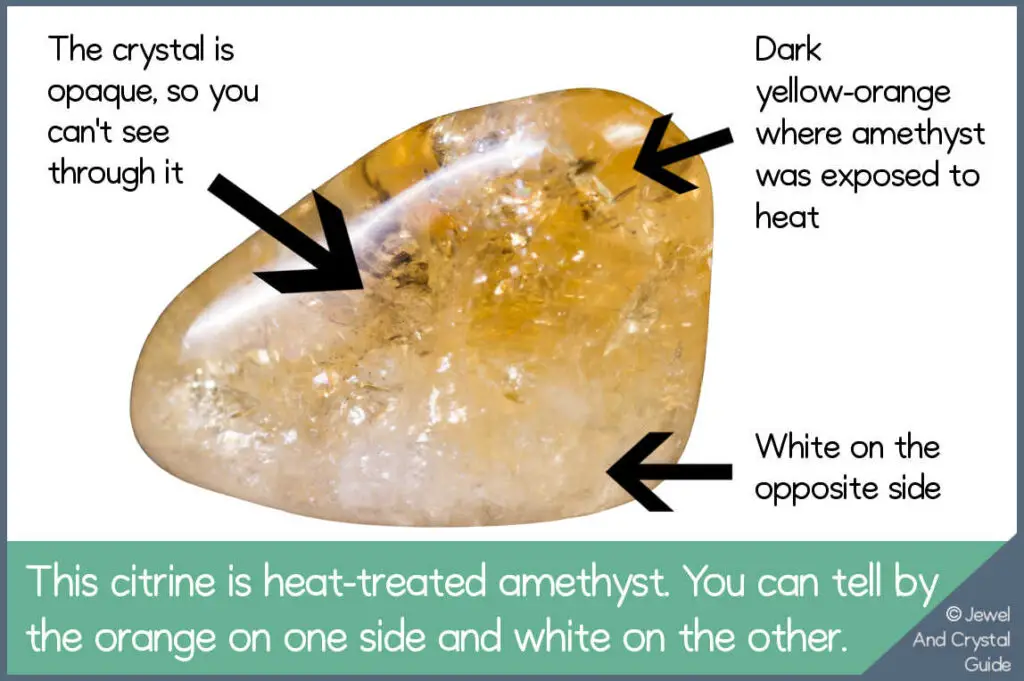
Fake citrine
And then there’s fake or imitation citrine.
Some people believe that heat-treated amethyst is fake citrine, but this can be debated. What we can all agree on is that glass that’s made to look like natural citrine is, without a doubt, fake or imitation citrine.
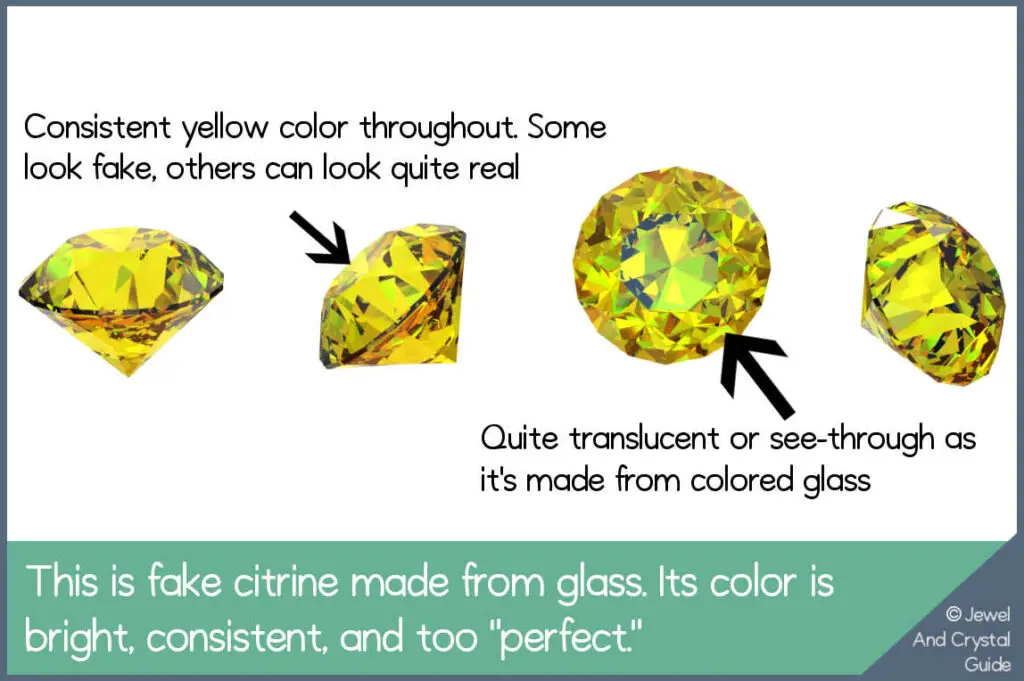
Manufacturers make fake citrine because people buy it as it’s cheaper than crystal, or because they want to fool people into thinking it’s genuine citrine and sell fake citrine for a high price.
Does heat-treated citrine have natural citrine’s properties?
Now that we know natural citrine is heated in the Earth and heat-treated citrine is heated in a kiln, let’s talk about each one’s properties and how they’re affected.
First, let’s consider that both natural and heat-treated citrine are formed in much the same way:
- Both natural and heat-treated citrine come from the same type of crystal: Amethyst (and sometimes smoky quartz).
- Both natural and heat-treated citrine have been heated to over 900°F (482°C).
- Both natural and heat-treated citrine turn yellow as their structure changes from heat exposure.
This tells us that natural and heat-treated citrine are formed in the same way, just in different places (underground vs. a kiln). Purists may believe that only Mother Nature makes crystals, but she also made the amethyst and the fire to heat it in a kiln, didn’t she?
In my opinion and experience, and after speaking to others in the crystal healing field, heat-treated citrine isn’t fake citrine. Heat-treated citrine is simply a variation or type of citrine, and it can be used with confidence for crystal and healing work.
But I don’t think heat-treated citrine’s properties are as powerful as natural citrine, so if you are a purist or you ask a lot more than most from your crystals, then natural citrine is probably best for you to invest in.
For the rest of us, heat-treated citrine remains a good option to bring us all the benefits a citrine crystal can bring.






